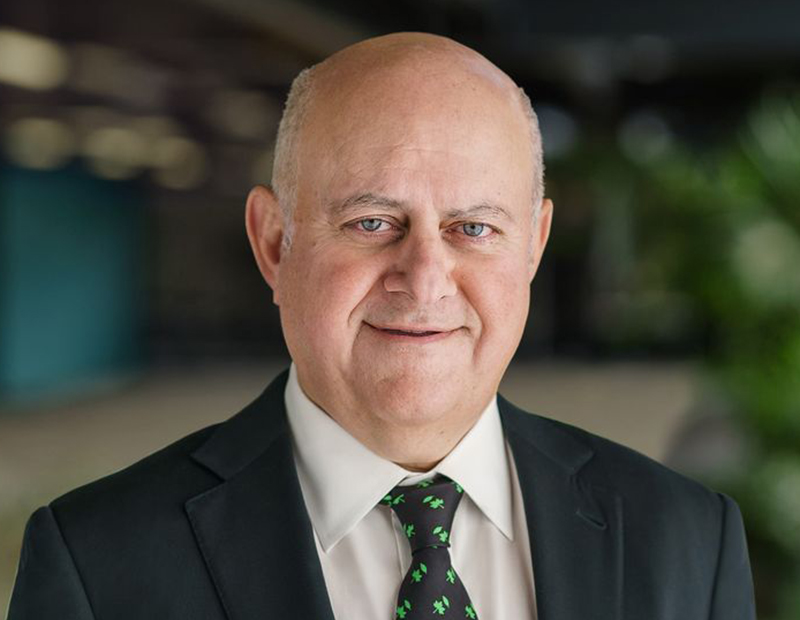What IBM Can Teach the Industry About Diversity
A panel of executives from IBM and Shell Oil kicked off CoreNet Global's first annual Global Corporate Real Estate Week.
Expanding diversity equity & inclusion within work environments and across organizations was a focus for the first day of CoreNet Global’s Corporate Real Estate Week 2021.
During a panel titled “DE&I: The Role of CRE, Design & Organizational Planning,” attendees got an in-depth look into how IBM’s inclusive philosophy translates into real estate and design strategies, and they received a number of recommendations for their own practices. Jeri Ballard, executive vice president, Real Estate, Business Service Centres and Corporate Travel at Shell Oil, moderated the discussion.
READ ALSO: CRE Firms Place More Women, Minorities in Top Roles: NAREIM
IBM has a long history of diversity, equity and inclusion, including hiring three African-American females in 1899 and introducing its first non-discrimination policy in 1953. But its commitment to continuous change is what really makes DE&I part of its DNA, according to Ella Slade, global LGBT+ Leader, Diversity & Inclusion, IBM Global Real Estate.
“I think it can be quite easy for individuals and organizations to become complacent and be like ‘We did this great thing five years ago and aren’t we proud of it and wasn’t that amazing,’” said Slade. “Things change so quickly and evolve and adapt, and that is why it is so important that everyone at IBM is invested in an inclusive culture, so that it can enable us to keep pushing things forward.”
The company keeps up with change through its framework of executive councils for each diverse community, as well as hundreds of business resource groups (aka employee resource groups) at the local level and countless volunteers who advance the concerns of diverse groups.
IBM has also made big investments in DE&I training. “IBM places a huge emphasis on the growth of individuals, but particularly in this area, it’s made a huge investment both internally and externally,” said Jane Muir-Sands, vice president, Global Real Estate and Operations, IBM Global Real Estate.
Slade, Muir-Sands and the other panelists shared a number of strategies for making workplaces more diverse, equitable and inclusive.
Start With the Basics
Corporations need to address basic needs first. Restrooms, for example, raise a lot of issues around both accessibility and gender equality. But that is not surprising, Ballard noted, pointing to Maslow’s hierarchy of needs.
“Until we even get the foundational elements right, it’s going to be hard to work up the pyramid,” she said.

Top L to R: Jordan Jones, strategy director for IA Interior Architects; Jane Muir-Sands, vice president, Global Real Estate and Operations, IBM Global Real Estate; Andrew Merewether-Helps, Digital Recruitment Experience Solution Expert & Project Manager. Bottom L to R: Ella Slade, global LGBT+Leader, Diversity and Inclusion at IBM Global Real Estate; Jeri Ballard, executive vice president, Real Estate, Business Service Centres and Corporate Travel at Shell Oil.
Go the Extra Mile
“You’ve got to look at not just what the legal law says but what extra we can do to benefit the employees,” said Andrew Merewether-Helps, Digital Recruitment Experience Solution Expert & Project Manager, IBM Global Real Estate.
In the U.K., for example, Merewether-Helps said, employers are required to make “reasonable adjustments” for people with disabilities and for some companies that may be allowing those employees to work from home. But IBM goes further to make everyone feel comfortable in the office, he said, providing vinyl floors instead of carpeting for people in wheelchairs and installing induction loops for the hearing impaired, for example.
Issues of employee comfort will be particularly important post-pandemic, said Merewether-Helps, as employers work on getting their staffs to come back to the office.
Be Empathetic
Employees should be able to recognize themselves in the workplace and be able to be their true selves in that environment without fear, according to Jordan Jones, strategy director for IA Interior Architects, who works with IBM.
“Something that I try to do and I actively do in all of my design work is trying to put myself in the shoes of the user and speak to them and empathize with them,” he said.
Know Your Markets
Companies need to be geographically and culturally aware. IBM’s global non-discrimination policy and equal opportunity policy applies everywhere the company operates, Slade said. But in the area of LGBTQ+ issues, approaches may have to be adapted due to local law.
“I have an internal list of countries where I need to be extra mindful,” they said. “Whenever I am going to do anything in those countries, I always engage my legal contact, who is global and she will engage with her local legal contact and we will work together on whatever initiative that may be.”
Keep Improving
Merewether-Helps recommended a “constant loop of feedback” on the inclusivity of office design projects, taking input from employees, auditing project results and doing better on the next project.
“Don’t stop when you think you have hit your gold standard,” said Merewether-Helps. “There is always room for improvement.”
Measure Progress
When it comes to measuring DE&I, companies must think creatively, since sometimes people in diverse groups are not eager to self-identify. The panelists recommended company-wide surveys, focus groups, conversations and digital tools like Mural to gauge employee sentiment.
There are some things that are easier to evaluate, the panelists noted, like the number of training hours, ally program enrollments, contracts with diverse vendors, and or mentorships.
“There are a lot of actionable things you can think about and introduce, and those are measurable as opposed to ‘how many of these people do I have in my organization,’” said Jones.
Personal accountability is also critical, said Muir-Sands. When it comes to hiring, she said, executives can insist on having a diverse slate of candidates before beginning the process.
“You want to make sure that your workforce globally is representative of effectively the population,” she said. “That is what diversity is about.”







You must be logged in to post a comment.